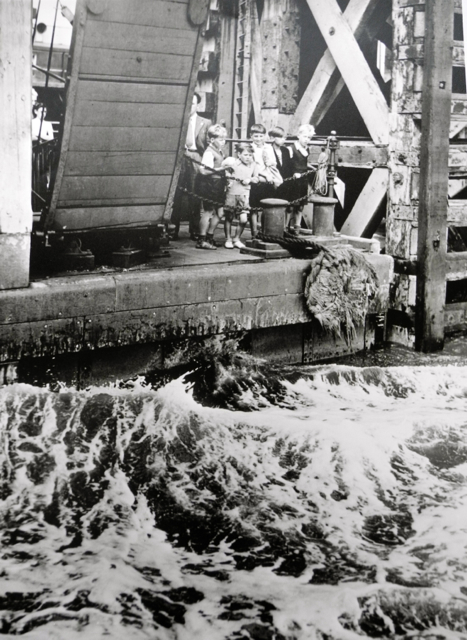You are currently browsing the monthly archive for March 2015.
Thousands flock to Woolwich for the opening ceremony 23rd March 1889.
The original ferries were called Gordon and Duncan.
The South Pier of Woolwich Ferry
Woolwich Ferry crew early C20th.
Industry along the south bank of the Thames at Woolwich.
London’s industrial heartland serviced by the Woolwich Free Ferry.
Passengers using the ferry for pleasure in 1960s.
From Wandsworth to Woolwich the south bank of the Thames is being transformed with ubiquitous luxury apartments now rising from former industrial sites. Trapped between the tower blocks and the cranes you can still find places and buildings that remind you that even thirty years ago South London was unfashionable. Go back even further to Victorian London and this was a place for the very poor. Much of the work available on the docks was casual and low paid. Housing conditions were very poor with considerable overcrowding. Victorian philanthropists and social commentators were drawn to the area to develop schools and missions.
A short walk from London Bridge you can still find the remnants of one of London’s poorest districts. Redcross Way is just off Southwark Street accessed through one of the railway arches. On the left there is an iron gateway covered in brightly coloured ribbon, feathers and flowers and behind this is a once forgotten grave yard for the out casts of society or Cross Bones. The bodies of 15,000 paupers and prostitutes have been buried in this unconsecrated ground since medieval times. Vigil candles are placed around the gates and help to reflect on lives ruined by poverty. It was widely believed, in Victorian times, that a cure for syphillis was to have sex with a virgin and some of the prostitutes buried here are young girls victim of this practice. Vigils for the outcasts of society are held every month more details here.
Across the street is The Mint and Gospel Lighthouse Mission; a mouthful for most people so no wonder it became known as The Ragged School. The Ragged School Union was formed by the 7th Earl of Shaftesbury 1844. They developed small free schools in deprived areas providing basic education and skills to destitute children. Often the schools tried to meet other community needs such as reading clubs, adult literacy classes, clothing clubs and Penny Banks.
St Saviour’s House is also in Union Street and is a striking building. It is still home to a charity that dates back to the C15th and have been providing support to the people of Southwark.
Redcross Garden is a little further on which was developed by the Octavia Hill 1887. It was to provide small scale social housing and a communal garden. The garden was restored in 2005 and includes a small pond and a new eco-building. In the central pavillion there is an inscription:
“Do noble deeds do not dream them”.
The row of six Redcross cottages were built for the working poor. The White Cross cottages were a later addition 1890 and can be accessed through a small alley. Now overshadowed by The Shard, an ever present symbol, that this is a place for the super rich.

















